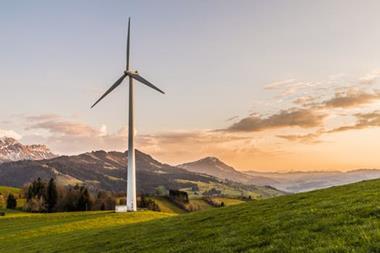The Norwegian government is allowing the country’s NOK9trn (€932bn) sovereign wealth fund (SWF) to invest up to 2% of the fund’s value in unlisted renewable energy infrastructure.
Siv Jensen, Norwegian Minister of Finance, announced: “The government is allowing for the Government Pension Fund Global (GPFG) to be invested in unlisted renewable energy infrastructure under the dedicated environmental mandates.
“Such investments shall be subject to the same profitability and transparency requirements as the other investments of the fund,” she said, in conjunction with the ministry’s publication of its annual report on the SWF.
At the fund’s current value, this puts the maximum permitted investment in unlisted renewables infrastructure at NOK180bn.
However, in its report, the ministry said the new investment type would be done solely within the GPFG’s special environment-related mandates.
The upper limit on such investments is to be doubled, it said, from NOK60bn to NOK120bn.
This is the first time the fund, which is built on Norway’s petroleum revenues, will be able to invest in unlisted infrastructure — with the inclusion of this asset type having been hotly debated by stakeholders for several years.
Explaining its thinking behind the decision, the ministry said the market for renewable energy was growing rapidly.
“A major part of the renewable energy investment opportunities is found in the unlisted market, especially in unlisted infrastructure projects. Expectations of significant investments going forward mean that this market is of interest to institutional investors such as the Government Pension Fund Global,” the ministry said.
The new investments will form part of Norges Bank’s active management, it said and will draw on the scope for deviations from the benchmark index, which it said would remain unchanged.
“In addition, the introduction of a separate upper cap on unlisted renewable energy infrastructure investments, at 2% of the fund, is proposed in order to limit risk,” it said.
Jensen said: “The proposed regulation will enable Norges Bank to adopt a gradual approach in a relatively small market and to invest in a cost-effective manner.”
The ministry noted Norges Bank, which manages the oil fund through its division Norges Bank Investment Management (NBIM), had said it would go ahead cautiously, starting by considering investments with partners in developed markets, and in projects with relatively low operational and market risk.
“Allowing for unlisted renewable energy infrastructure is not a climate policy measure, but is a part of the investment strategy for the fund,” Jensen said.
“These investments shall be subject to the same profitability and transparency requirements as the other investments of the fund. We are not stipulating that the Fund shall be invested in unlisted renewable energy infrastructure, but are enabling Norges Bank to make such investments if deemed profitable,” she said.
In January, the think-tank Re-Define argued that the GPFG should be allowed to invest at least 5% of its assets into renewable energy infrastructure, in order to make any real impact on the fund itself.















